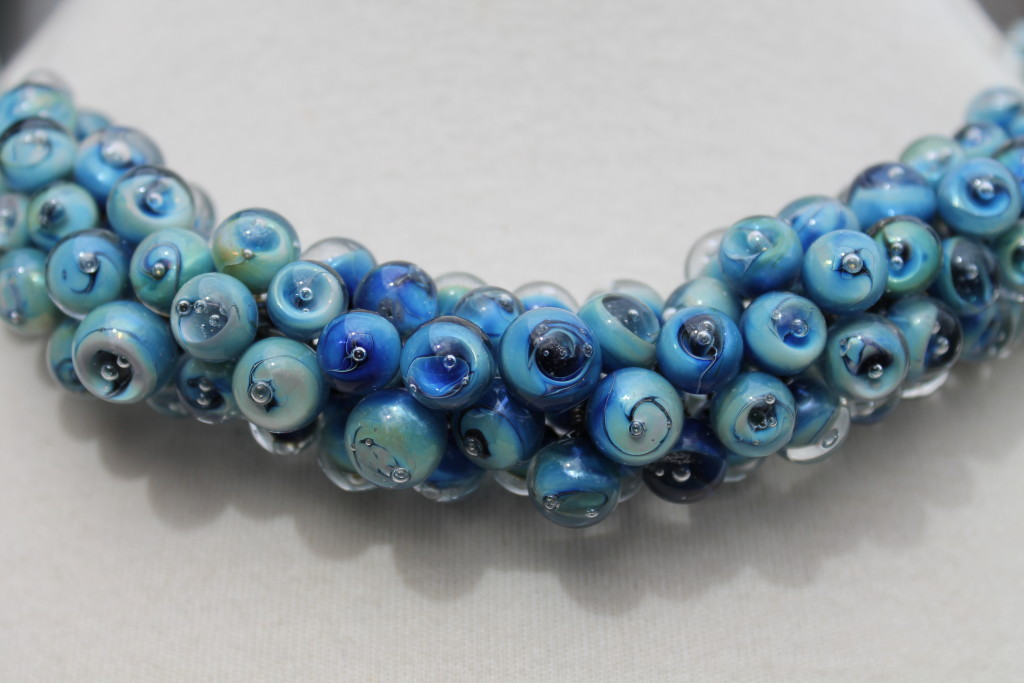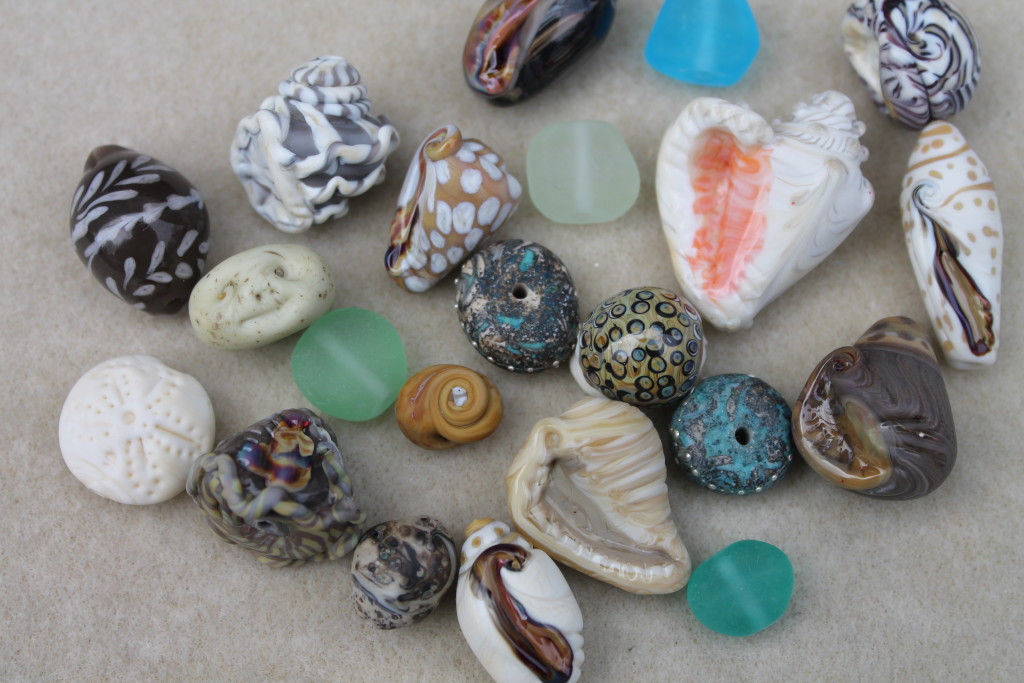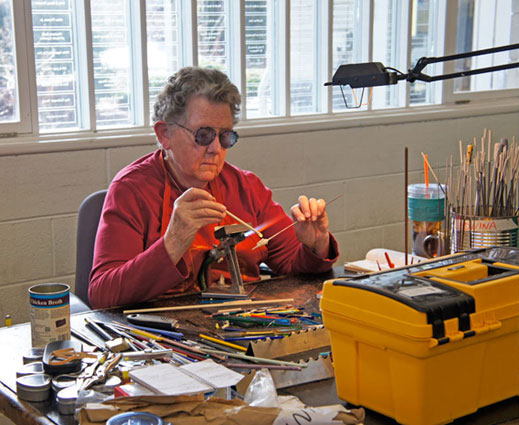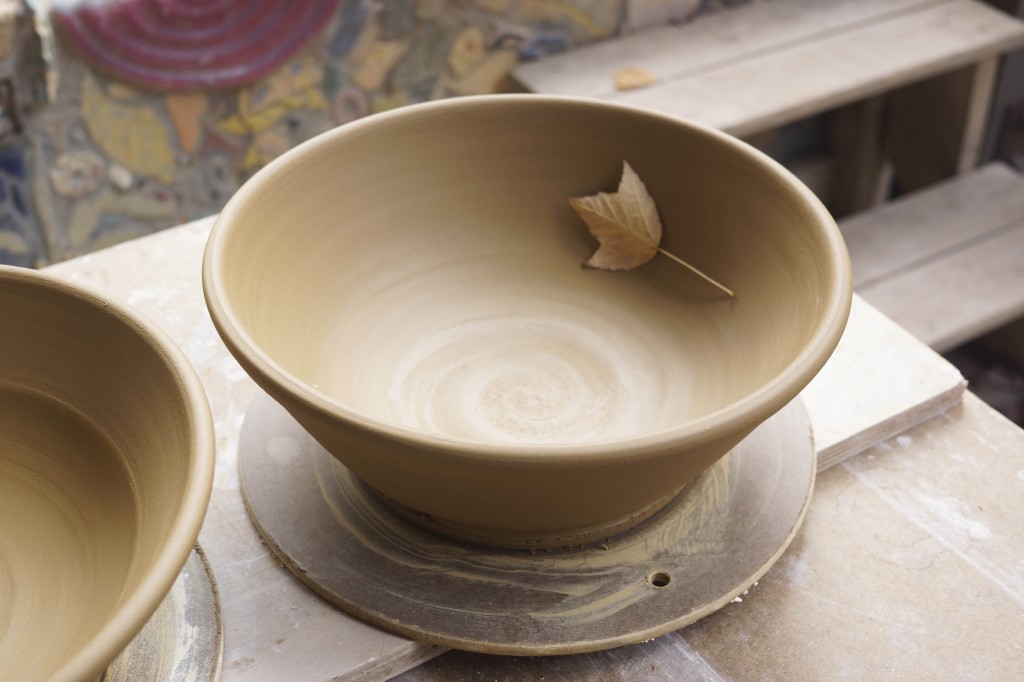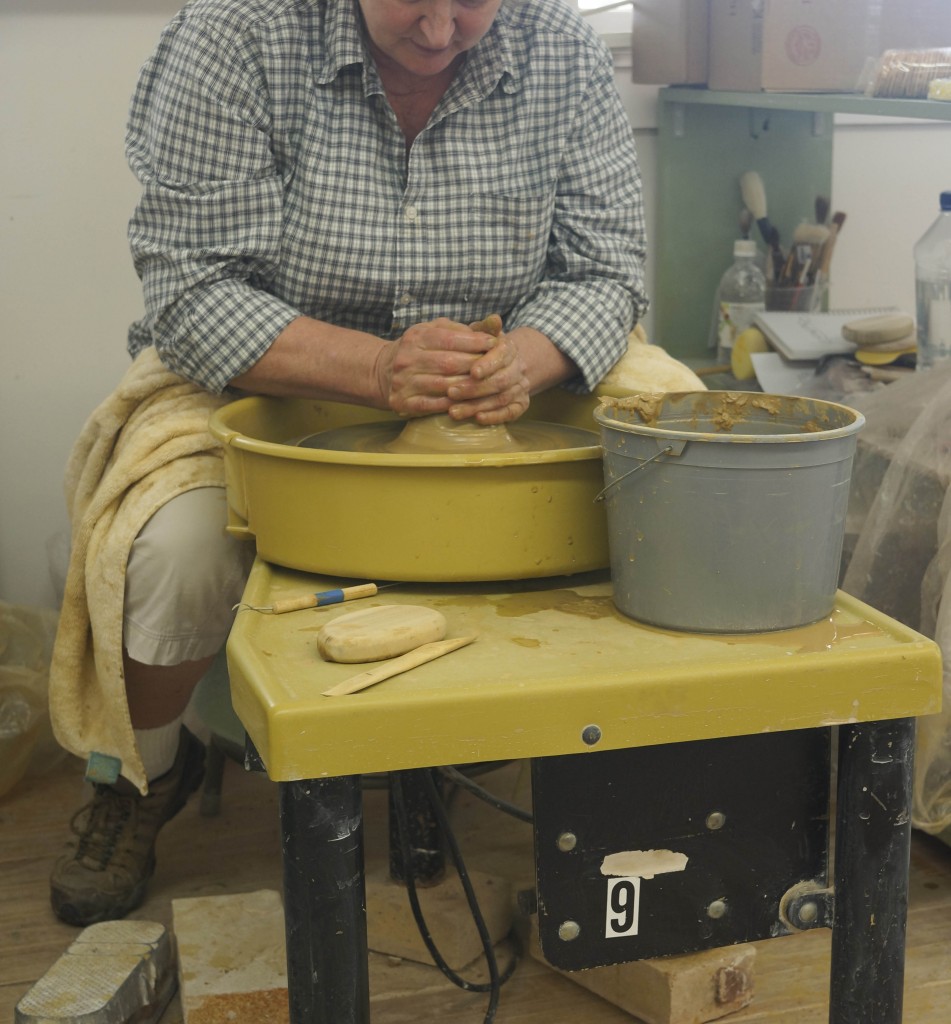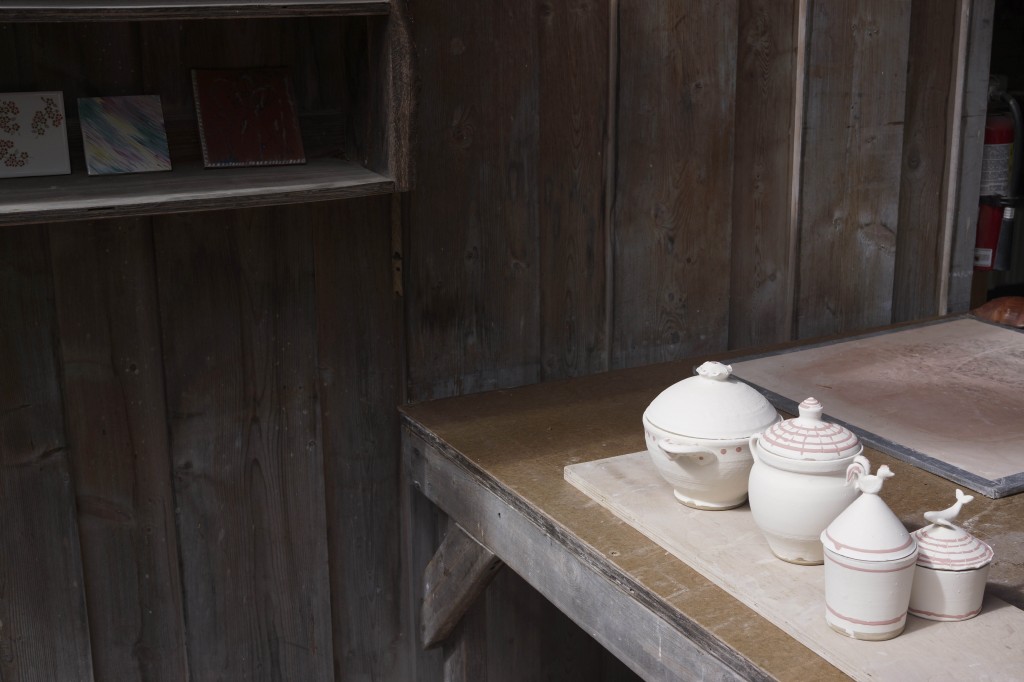Though small in physical scale, a single innovation changed the course of glass making in America: in 1962 Harvey Littleton, with the help of Norm Schulman and Dominick Labino, built and demonstrated a studio-scale glass furnace at a workshop for university ceramics professors held at the Toledo Museum of Art. Prior to their demonstration, glasswork had been closely linked with production factories, and a studio glass practice was pretty much unheard of.
Two years later, a fortuitous meeting between Littleton and Penland director Bill Brown at the World Craft Conference, held at Columbia University in New York City, triggered another turning point. Once again, Littleton built and demonstrated a small glass furnace, and Bill Brown left that conference determined to build a glass studio at Penland School of Crafts. In 1965, Bill Boysen, a student of Littleton’s, arrived at Penland to build that studio, and hot glass at Penland became a reality. Penland’s first formal offering in glass was the following summer when Boysen taught two classes. Glass has been a vital component of Penland’s program ever since.
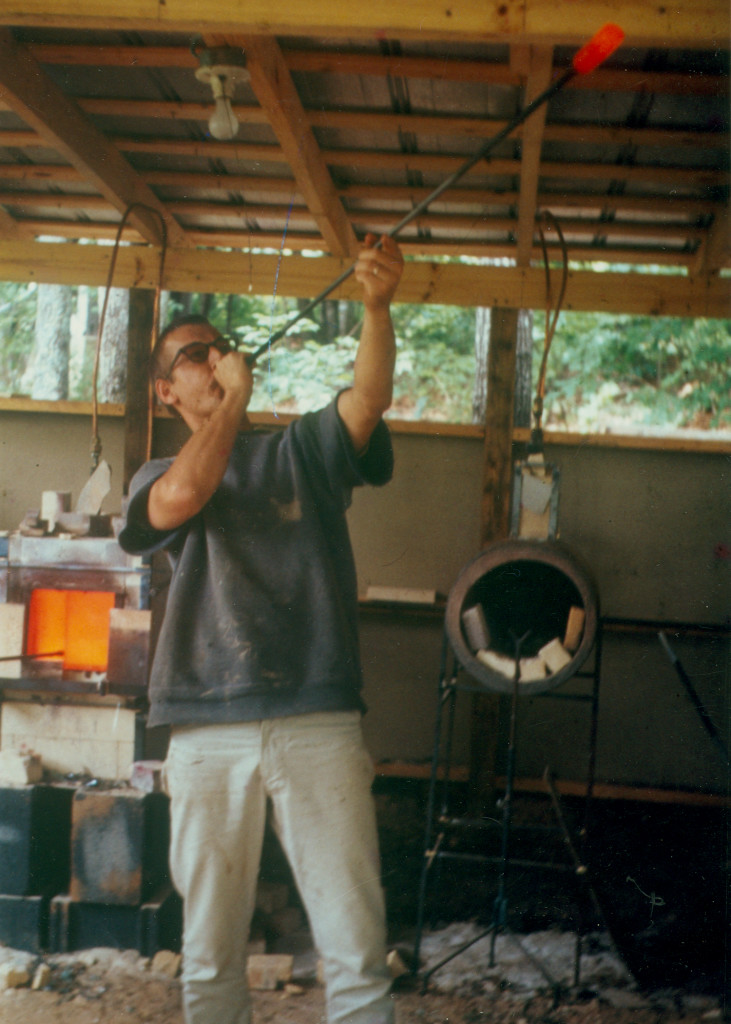
Cynthia Bringle, longtime Penland clay instructor and local resident, was here when Boysen arrived to build the studio. When asked what that felt like, she says, “Like many of the early studios, everyone was just doing what it took to make it work. Bill Boysen came down and did it. I just came down and helped!” She remembers early work made from melted glass marbles (one of the forms you could buy raw glass in back then). Clay and glass remained intertwined in the early years: Norm Schulman, local resident and Penland clay instructor, worked in both media and was an advisor for Littleton’s furnace design. When Richard Ritter was a resident artist in the 1970s, Bringle made ceramic collars for him to use for making glass murrinis, and she filled in as an impromptu gaffer.
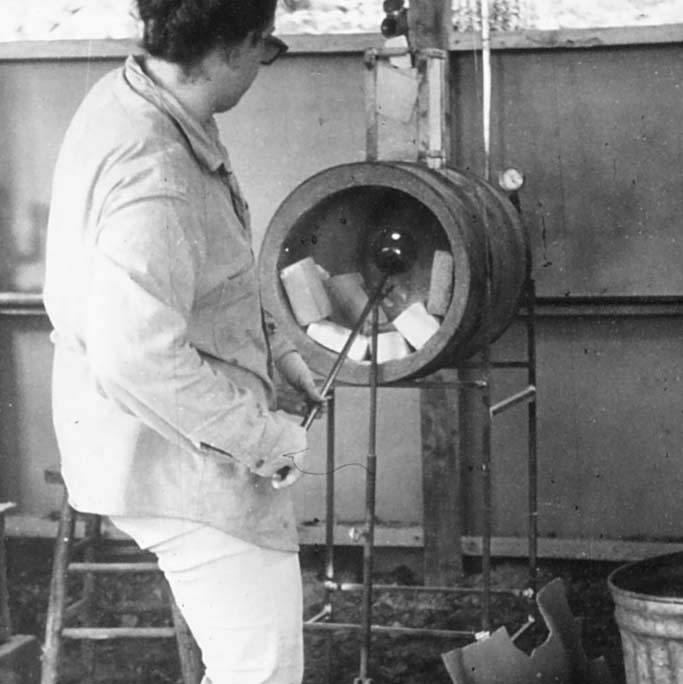
Littleton’s technology and Brown’s vision for a glass program at Penland acted as a springboard for the studio glass movement. The technology was accessible, and Penland’s glass program became an influential hub. Penland’s resident artists program—a unique program offering long-term housing, studio space, and creative community to a group of craftspeople—was instituted by Brown in 1963. The first resident in glass, Mark Peiser, arrived in 1965. That program and Penland’s immersive learning environment, along with the progressively more sophisticated glass studios, made Penland a magnet that attracted a community of glass artists to the area surrounding the school. In the late 1970s Littleton retired from the University of Wisconsin in Madison and built a home and studio in Spruce Pine, North Carolina, close to Penland. He was part of Penland summers as a visiting scholar for eight years between 1976 and 1984.
Fifty years after the first glass studio at Penland was built, there are, according to glass artist Kate Vogel, approximately sixty active glass artists living and working in the surrounding community—about forty of whom work full time in glass. The Glass Art Society was founded at a gathering at Penland in 1971 and has held their annual conference here a number of times. The second Penland glass studio, the Bonnie Willis Ford Glass Studio, opened for classes in 1977. The current studio, the Bill Brown Glass Studio, was dedicated in 1995 during a Glass Arts Society conference. Many glass artists, from all over the U.S. and the world, have come to Penland to teach and to learn: in fifty years over 700 classes in glass have been offered, taught by almost 300 different instructors, and 27 resident artists in glass have worked in the glass studio at the Barns. In that time, Penland programs have stretched the boundaries of how glass can be worked at the studio scale, all the while fostering a global community of glass artists.
— Carey Hedlund, Penland Archivist
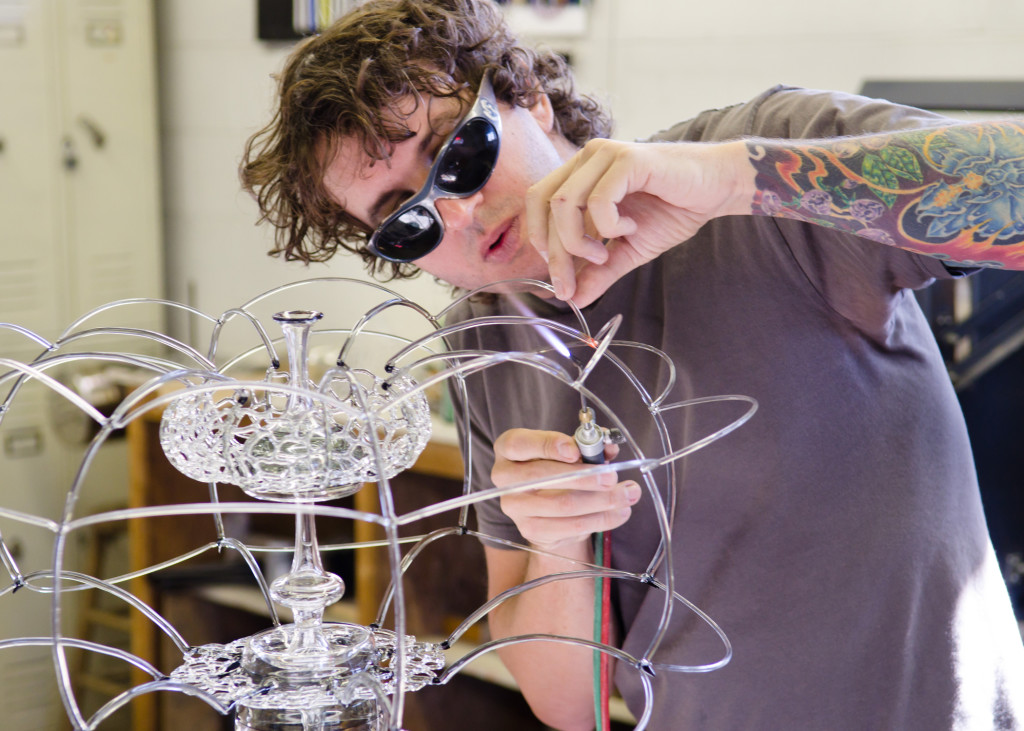
Resources:
Byrd, Joan Falconer. Harvey K. Littleton: A Life in Glass. New York: Skira Rizzoli Publications Inc., 2011. Print.
Documentary by WGTE television, Toledo, OH: features film footage of the Toledo workshops and interviews with Littleton, Labino and Schulman: http://www.wgte.org/wgte/watch/item.asp?item_id=11648
http://www.toledoworkshop.org/toledo-1962-the-liberation-of-glass.html
Glass Arts Society website: http://www.glassart.org/about.html
Penland School of Crafts, Jane Kessler Memorial Archives
Conversations with Kate Vogel and Cynthia Bringle, August 2015


